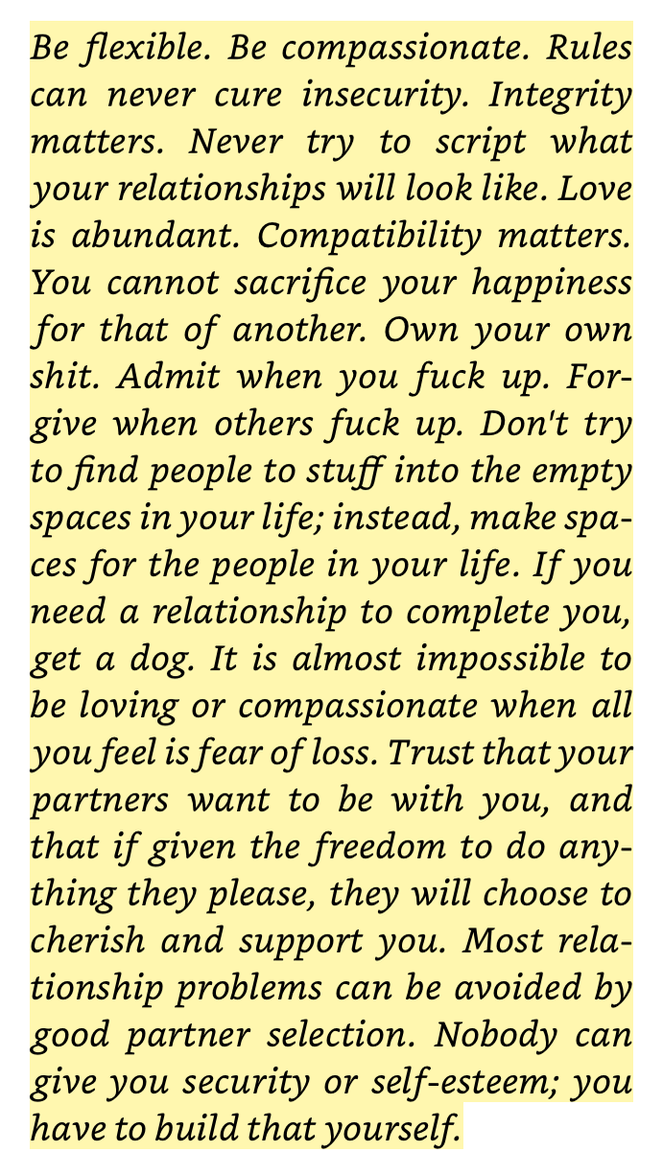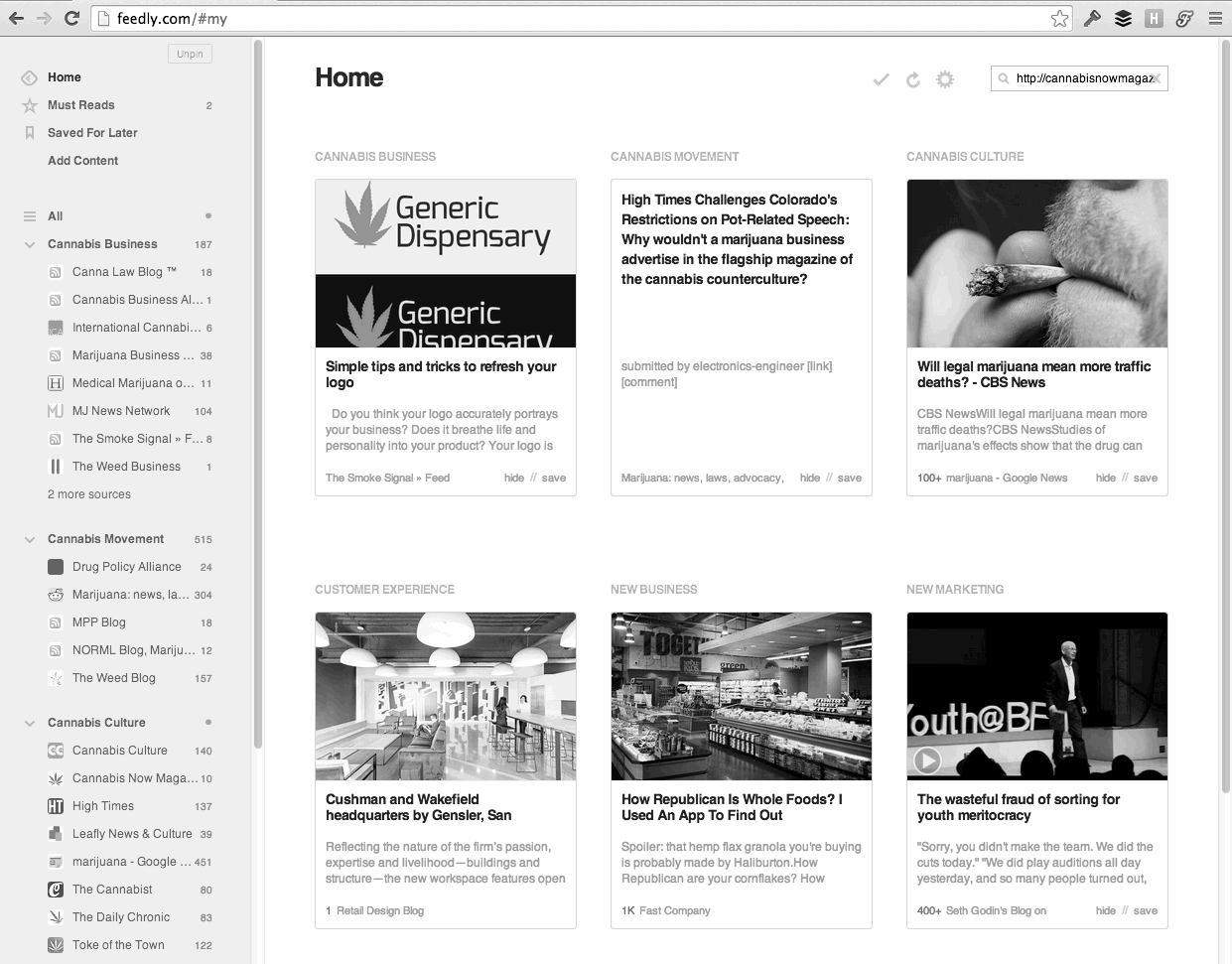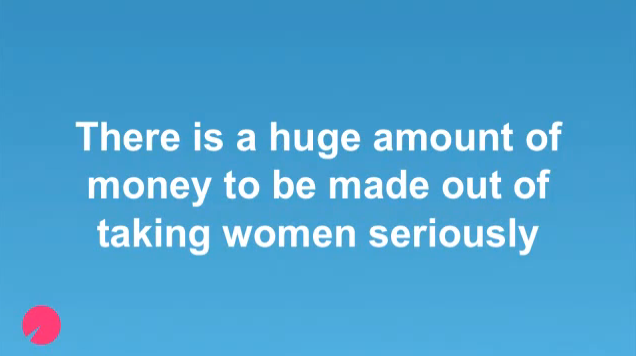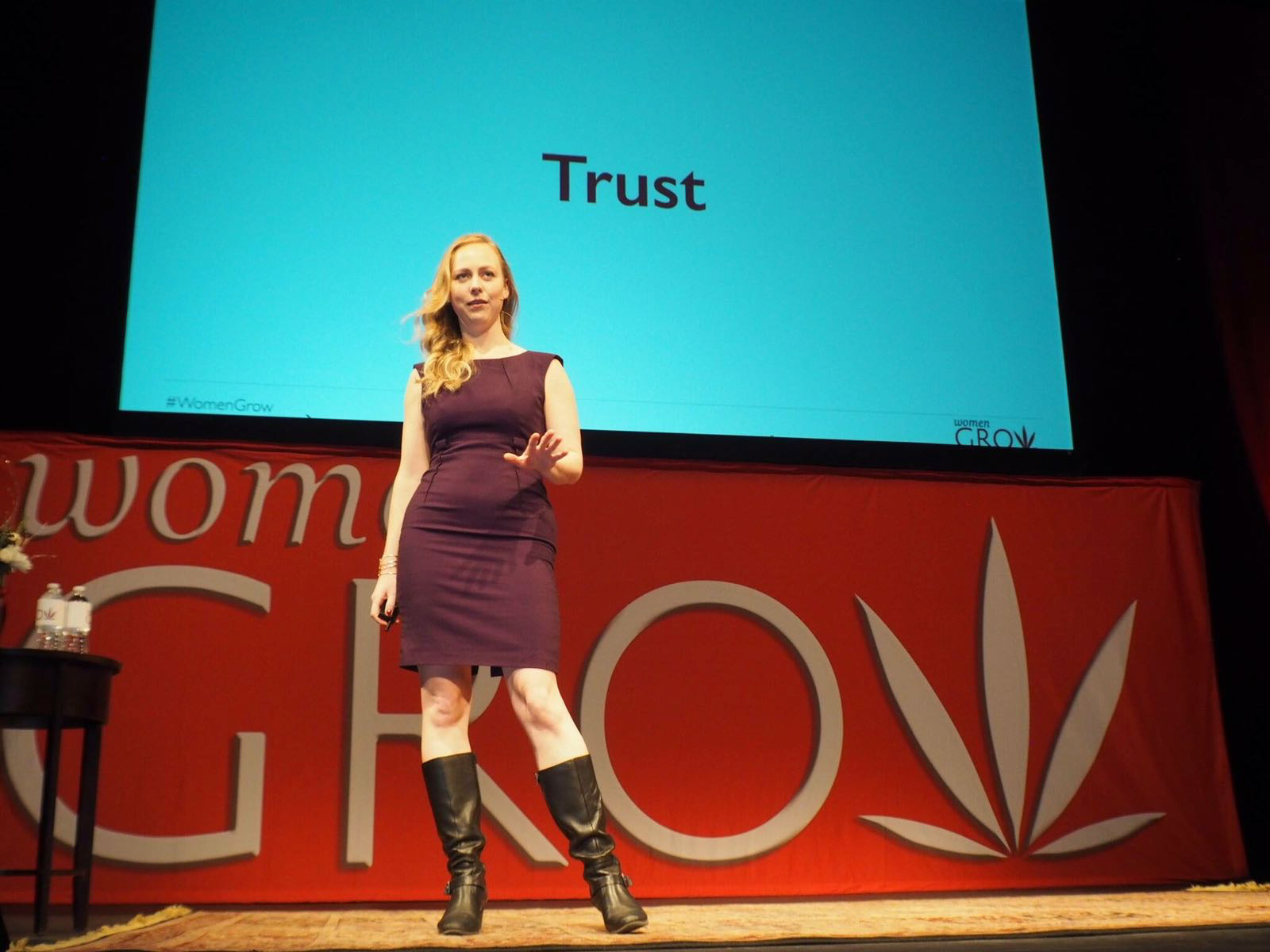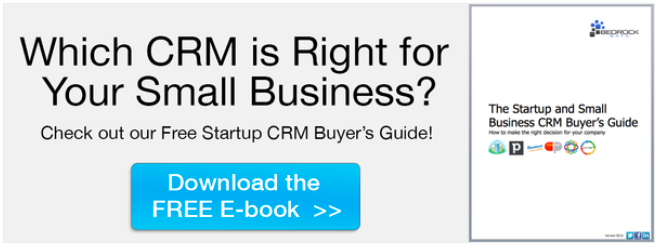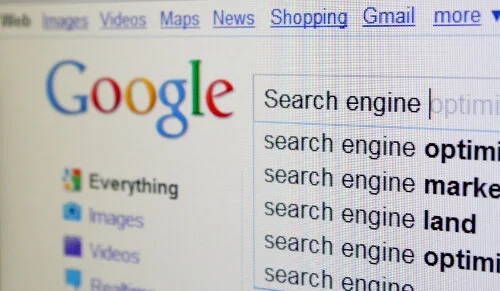I tell UCLA Anderson MBAs My Story (video)
Watch one of the first business school panels on cannabis business opportunities. Speakers include Jazmin Victoria Hupp, Kenny Morrison, Christian Groh, and Jim Baudino.
The 32nd annual CREATE Conference at UCLA Anderson was one of the first business school events in the world to feature a cannabis panel. I had the pleasure of speaking on the mainstage with five different sides of the cannabis puzzle.
Dr. Jeff Chen, director of the National Institute of Cannabis Endocannabinoid Research and Founder of the Cannabis Research Group at UCLA.
Christian Groh (pronounced "grow" no kidding) COO of Privateer Holdings an investment fund with companies such as Leafly-which receives 11 million visitors a month, Tilray-a medical cannabis cultivator in Canada, and Marley Natural-the licensed Bob Marley cannabis brand. Christian comes from a traditional VC investment background at Silicon Valley Bank and brings the important private equity perspective to this conversation.
Kenny Morrison, founder of VCC Brands, is a UCLA drop-out now invited back to the business school as a CEO. Kenny shared how his cannabis sales experience started in college and then matured into one of the largest edible brands in California & Washington recently. Kenny shared his perspective from the product, branding, and lobbying he leads.
Jim Baudino, VP of Marketing at Merry Jane, is a UCLA Anderson graduate and 10 year veteran of Toyota. Jim talked about representing cannabis culture and SnoopDogg's cannabis company portfolio.
Where To Start Optimization Testing On Your Website
If you're just getting started with web optimization testing or have limited testing resources (hey that's like everybody), which pages you test is the most critical decision you have to make.
If you're just getting started with web optimization testing or have limited testing resources (hey that's like everybody), which pages you test is the most critical decision you have to make. At today's WhichTestWon's Conference I learned from Justin Rondeau that our optimization instincts are probably wrong on where to start testing.
Page Requirements for Optimization Testing
Before you can test a page, it must meet these two requirements:
Does the page get enough traffic to reach statistical significance in a reasonable time frame (1-5 weeks)?
Does the Page Directly Impact Conversation? If Yes, what is the current conversion rate? If No, what is the long term value of the conversion that this page lifts?
Start Lower in Your Funnel
For an eCommerce site, start as late in your conversion funnel as possible. Here's a typical eCommerce funnel:
Entry Pages: These are politically charged since many people may be involved in creating these campaigns, skip optimizing these first.
Category Pages
Search Results
Product Pages
Cart & Checkout: START HERE. Few people will challenge you to improve the cart because carts are just carts. You can create a lot of lift here.
Receipt/Thank You: Rarely tested! Try an up-sell or cross-sell here instead of during checkout.
Next, Where Is Your Landing Money?
Don't start with high bounce rate pages. We know–they're sinking ships that you'd like to save. Not worth your time. Try landing pages for your highest conversion traffic. Or landing pages for your most expensive (PPC) traffic.
Next, Test Your Conversion Path
Now that you've improved the beginning and end of the funnel, now you can test the middle. This means testing your category pages, search result pages, product pages, and so on. Find everything that is stopping people from buying in your funnel and test how to fix it.
Next, PPC Traffic
If you're paying for customers to click on your links, you need to nail the landing page. At a minimum, your page needs to feature what your ad claimed. You'll be surprised at how many people screw this up.
Next, Referral Traffic
Know who is sending you traffic and where they are sending them. Make sure you're meeting the standards that people expect.
Am I Done Yet?
Of course not! Follow WhichTestWon for more testing ideas or get you butt to Austin for the Live Event.
What I Learned Turning Off and Tuning In
See how I learned how to be in a museum, how to Burn in Spain, new psychedelic treatments, the final Summit at Sea, winning licenses, and at the very bottom, everything else I'm up to this year.
2016 brought a lot of learning and a lot of joy.
My biggest lesson of 2016 was figuring out how to serve myself first in order to serve everyone else sustainably. People had always warned me about "burning out" but I had never hit my limit. Creating the 2nd Annual Women Grow Leadership Summit in Denver for over 1,200 women was my greatest accomplishment. It was also what broke me.
Although I could have blamed external challenges for breaking me. I realized that all my external challenges were reflections of my own inner struggles. So I went about investing everything I had into working on myself. Yoga, meditation, books, dance, music, purpose-driven leadership, cannabis, psychedelics and the School of Womanly Arts were my practices. We found a new CEO to take over my role at Women Grow on July 1st and I focused on myself full-time.
Leaving the CEO role at Women Grow was the hardest transition I've ever made. The unexpectedly tough part of aligning your personal and professional purpose is allowing them to separate when needed. It took me almost three months just to stop thinking of myself and my role as one.
I ran away to play in Spain, speak in Berlin, camp at Burning Man, and work Symbiosis. I traveled 26 weeks of 2016. I learned a lot.
I learned how to love myself unconditionally. I learned how to stop using food to solve problems that food doesn't solve (and lost 30 pounds). I learned how to stop caring about what people who don't care about me think. I learned how to put myself first every day. I learned how to process dark emotions and self-hatred. I learned to stop over-thinking the past at the expense of being present. I learned I didn't have to be afraid of my full emotional range.
I took six months off for myself. The changes I've made to my mental, physical, and emotional health have just begun to benefit me. I'll be back at the 3rd Annual Women Grow Leadership Summit in a few weeks. I invite you to join me at the summit, Feb 1-3. It’ll be an experience like you’ve never had. Click here for more info.
Scroll down to see how I learned how to be in a museum, how to Burn in Spain, new psychedelic treatments, the final Summit at Sea, winning licenses, and at the very bottom, everything else I'm up to this year.
I Learn By Teaching
I perfected the blend of education, inspiration, and community that encourages women to take huge risks. Over 1,200 women gathered in the Ellie Caulkin's Opera House in Denver to hear 32 speakers, including Melissa Etheridge.
I Learn What Burn-Out Really Is
I was wiped after this event. I couldn't think. We tried to do long-term planning but we had exhausted ourselves and the entire team. It was impossible to follow up on this momentum. I'm so grateful to the so many of you who gave me space during this sensitive period to grow and recover. I was no longer taking care of myself and I had failed to care for my team.
I Learn How to Release
I Learn How to Be in a Museum
Being featured in the Oakland Museum's exhibit on Cannabis in California was a first. You sometimes feel like you're both predicting and making history on days like this. I'm grateful we got over a dozen women featured in this exhibit.
I wrote
You have everything you need to start. Every time you are waiting for another teacher, you are wasting time. Learn in practice, not study.
I Learn to Relax in Europe
Grateful to Bar-Keep for showing me the most diverse Burning Man event in the west. 2,000 Europeans gathered on a small plane in the Spanish desert for a week in scorching July to build a humble city and party down.
Grateful for the invitation to speak at Tech Open Air in Berlin. I got to debut my talk on "Clarifying Your Calling with Cannabis" to a packed house.
Grateful to edge pushers like Cindy Gallop on "Why the Next Big Thing in Tech is Disrupting Sex" if you want to know what's up after cannabis.
I Learn About Relationship...
Grateful for the many books I read on relationship this year...including American Savage, Goddesses Never Age, The Law of Attraction, The Art of Everyday Ecstasy, and More Than Two.
Learning at the Burn
For my fourth Burning Man, I attended for 10 days and lead a camp of 35. Friends from across the world came. I learned to run my first electrical grid (with lots of trial and error). I found a pair of exceptional Tantra Energy Teachers and became enraptured with their workshops.
I Learn About Fear & Love
John Lennon and I share a birthday in October and this thought
"There are two basic motivating forces: fear and love. When we are afraid, we pull back from life. When we are in love, we open to all that life has to offer with passion, excitement, and acceptance. We need to learn to love ourselves first, in all our glory and our imperfections. If we cannot love ourselves, we cannot fully open to our ability to love others or our potential to create. Evolution and all hopes for a better world rest in the fearlessness and open-hearted vision of people who embrace life."~ John Lennon
I Learn About Psychedelic Treatments at Horizons
The Horizons conference presented research on MDMA & psychedelics from celebrated universities...NYU, Columbia, John Hopkins.
Multiple studies showed patients experiencing up to 8 months of relief from symptoms with just one "magic mushroom" therapy experience. These "peak spiritual experiences" were leading to increased positive attitudes, altruism, and deeper development of social relationships.I was seeing that we had extended our physical bodies past our ability to fill our lives with meaning. Alzheimer's disease was preventable if we stayed mentally active and engaged. These patients showed how spirituality was actually a component of health, particularly at end of life.
I Learn Prototyping in November
I took Prototyping for Creative Innovation with Megan Goering, formerly of Google. We ran through prototyping techniques and tests until we could do them by habit.I wrote out dozens and dozens of business ideas and then weighted them on factors like start-up costs and market size. I began testing messaging of all the different things. The cannabis helps with ideation but didn't make narrowing down any easier.
I Learn About Sex & Sugar at Sea
On the eve of the election, I boarded a cruise ship for 3,000 "innovators" and we sailed out to the Caribbean. Marijuana was legalized in six states but we were all shocked by the Presidential election. We gathered to build new ways to a future we all want to live in. We workshop. We dance. We drink. We eat. We snuggle.
I attend panels like "Sugar is the New Tobacco" and learn from Dr. Dean Ornish that 86% of 3 trillion dollars spent in healthcare are spent on chronic care for mostly reversible conditions. We've created a food system, which externalizes all the costs of eating cheap food that causes illness.
Dr. Ornish reveals that "bad habits" are developed to deal with the isolation of modern life. He uses lifestyle as treatment by asking people to eat well, stress less, move more, and love more. He's found that fear is not a sustainable motivators for people to change bad habits. You have to fill the voids those habits leave with even more joyful and pleasurable motivators.
I Learn Good Work Pays Off in December
Reading Up on the Cannabis Industry
People researching the legal marijuana industry often ask me how to get started in the Cannabis industry. These are the resources I read to stay up to speed on current Cannabis culture.
People researching the legal marijuana industry often ask me how to get started in the Cannabis industry. These are the resources I read to stay up to speed on current Cannabis culture. Try using an RSS reader, like Feedly, to create a news dashboard of all these sites instead of visiting them individually.
Cannabis Industry Reads
- Canna Law Blog: This is a must-read for current analysis of the changing marijuana industry landscape in real time.
- Marijuana Business Daily: The oldest cannabis industry news source and the only completely editorial independent.
- Marijuana Today Podcast: Weekly podcast with the latest business news and politics discussed by friends of the ArcView group.
Current Cannabis News & Opinion
- Huffington Post's Medical Marijuana Section: Broad selection of popular web articles.
- MJ Headline News: The media arm of the Marijuana Business Association, based out of Seattle.
- The Cannabist: The Denver Post's dedicated marijuana news site with culture, reviews, and food.
- Cannabis Now: I subscribe to their print edition as well.
- Marijuana SubReddit: I'm not a fan of Reddit as a community but they do surface some great links early.
- The Weed Blog: Interesting range of original articles.
- High Times: You know High Times already and it's worth keeping tabs on. Avoid their mobile site, which values their link farm so highly that it's barely readable.
The Legalization Movement
It is important to understand legalization across America on the road to growing the cannabis industry. Donate your time, money, and some attention to this.
Leave any sites you recommend adding to this list in the comments. Thanks!
How to Name Your Cannabis Business
7 principles to remember when naming your cannabis business. If you're opening a dispensary or cooking up an edibles brand, make sure to read this first.
Best, Ok, & Bad Cannabis Brand Names
Business names tend to fall into one the above categories. There are the best business names that lift the business and the brand. They are easy to remember and customers like them. Think JetBlue, Amazon, Twitter, Under Armor, Restoration Hardware and others. Ok business names don't help or hurt you. They tend to be family names or just unrelated but common words (Breyer's, Harvard, Apple). Bad brand names are detrimental or require explanation. They may be difficult to spell or remember–like skincare company Kinerase. Or they may be easily confused with a competitor's brand: Berkeley College and UC Berkeley. Finally, your company name could be hard to pronounce so your customers might talk about your company less because they don't know how to say it (Hoegaarden).
1. Resist Green & Leaf Motifs
Listen! The first thing you must do is make your cannabis business look like just your own. Make everything you can look proprietary and custom to you. This starts with your logo not looking just like every other cannabis brand around–with lots of green and marijuana leaves. I know you live and breath your brand but customers are easily confused. Make your brand stand out by not looking like anyone else.
2. Don't Add "420"
Notice how what was "BP Petroleum" is now just "BP"? The energy business has changed since BP was originally named Anglo-Persian Oil Company in 1909. In 2001 they spent tons trying to show they were more than just oil by shortening their official name to "BP" in their marketing. (Too bad their 2010 oil spill in the Gulf of Mexico was the largest accidental oil release in history.) The point is! Pick a name that is not dependent on one line of products. You never know where your cannabis business product lines will be in 5 or 50 years.
3. Give Your Cannabis Business Name Room to Expand
Zappos founders chose the Spanish word for shoes instead of Shoes.com because they knew one day their brand would expand to do more than just sell shoes. By choosing a brand name that doesn't connect you to only one product or vendor, you'll be able to adapt your business over many years as the market changes.
4. Make It Short
Longer names are harder to remember. Aim for two words or less.
5. Make It Memorable
I know your brand name means a lot to you but your customer may only think about you a few times a year. Make it easy to remember, which more importantly, makes it more likely that they'll tell their friends.
6. Make It Easy To Spell
Remember that the first way most potential customers are going to look at you is online through your website. If searching for your brand name is hard (because they can't spell it) you're going to have to spend more on Google Adwords to make up the web traffic.
7. If You Pick A Local Name, Your Cannabis Business Can't Move
Denver Dispensary sounds great now but what happens when you want to open a second location in Seattle? There's a long tradition of boring, location-base company names. Avoid adding the name of your street, neighborhood or town if possible.
What Are Your Cannabis Branding Challenges?
Leave them in the comments or get in touch for a workshop designed just for your cannabis brand team in Manhattan, Denver, or Seattle.
7 Reasons You Should Focus on Women in Your Advertising & Your Business
Gallop's keynote is required watching for men & women – she teaches us how businesses are missing out on innovative ideas & profits by staying male-centric.
Cindy Gallop opened the second 3% Conference in San Francisco, named because only 3% of Creative Directors in advertising are women. Gallop's keynote is required watching for men and women, as she teaches us how businesses are missing out on innovative ideas and ultimately profits by staying male-centric.
Key Takeaways
- Women ARE your target audience. Women are no longer a "niche" marketing target. They make the majority of purchases in almost every sector and are key purchasing influencers in every sector (even traditionally male-dominated ones). Women influence 60% of car purchases and 90% of technology purchases. Women are even the majority of gamers today, if you include social gaming.
- "Women share the sh*t out of everything." At any social gathering listen to the men talk about sports scores while the women share their experiences. Women have shared their experiences to build intimacy since the world began so it's no mystery why today they are the majority of social media users.
- Women get stuff done. Even if your product is aimed at men, Ms. Gallop recommends targeting your advertising at women. Women are the norm. Men are now the niche audience. There is a ton of money to be made by taking women seriously.
- Marketing done with women through the male perspective is no longer acceptable. When the 97% of Creative Directors are men, you gets ads that don't feature women in dynamic, engaging, and aspirational roles – instead you only see women as mothers, girlfriends, and sidekicks. We need a new approach to creativity – created by women, presented to female Creative Directors, for female clients.
- "Women challenge the status quo because we are never it." Women innovate and women disrupt. If you want your company to be innovative, find every department run by an all-white-male team and add women to it.
- "Women notice things that men don't." They notice relationships. They notice how people communicate. They notice how to get people to work together more cooperatively naturally and intuitively. Women notice the things that will make your company run better than it does today.
- "Women get sh*t done." How many women do you know that support men by doing the things they don't want to do? From the laundry to Sheryl Sandberg operating Facebook so Mark Zuckerberg can do what he really wants to do. The men who recognize this can still be the stars of the show but have a much smoother operation behind the scenes.
Your To Do List
Cindy Gallop implores men and women to do the following things to help change this culture, and ultimately make a ton of money.
- Call It Out. If nobody says anything, nothing will change. Every time you see a conference with an all-male line-up – say something. Every time the junior male account rep tries to take over a meeting you should be running – say something. It doesn't require being angry, it just requires pointing it out, because gender bias is often unconscious. You have to "break the closed loop of white guys talking to other white guys about white guys."
- Put Yourself Forward. Women who don't promote themselves help this male-dominated cycle continue. Gallop cites how there's been a ton of outrage over Twitter's lack of female board members but women she knows (and are highly qualified) hesitate even nominating themselves to advise a new startup.
- Redesign the Business. Business has been built for centuries around a male model of command and control, which is perfectly logical because, for centuries, women weren't allowed to work. The Future of Business is about complementing that with female values – collaboration, consensus building, and community. The system of business today is based around men going to work and women staying at home to support them. The reason we don't have enough women in leadership is because the very system is built to work for men and not the women who shoulder an unfair amount of the home support work. When women look up at the men running their organizations and see the grueling hours, they opt-out. But why have we designed every position at the top to be so unbearable? It doesn't have to be. Gallop challenges us to redesign a bite-size chunk of how something is done at your company. Redesign it the way you want to work and point to it as an example of how a redesigned business process makes work better for everyone.
Gallop believes the business model of the future is "shared values + shared action = shared profit (financial & social)". This is the business model she urges brands to adopt. Go beyond "co-creation" and pursue "co-action" between brands and people to benefit everyone. This business model also applies to men and women working together to create a world that we will all love working and living in.
Watch It!
How To Create A Responsible & Effective Cannabis Brand
We have a huge responsibility to shape how the public perceives Cannabis going forward. See how smart branding pays off in the long run.
The first annual Cannabis Business Summit wrapped up today with an overview of how Cannabis companies should shape their brand and marketing strategies. Taylor West, Deputy Director of the National Cannabis Industry Association, led a session with Kali & Bridget from Agent 64.
Culture Movements Are Not Marketing Gimmicks
Bridget believes that Cannabis legalization is a cultural movement, which means you are now a part of the cultural movement.
"Culture movements define an idea on the rise."
We have a huge responsibility to shape how the public perceives Cannabis going forward. Unlike traditional product marketing, which starts with the product, Bridget encouraged the audience to define their cannabis brand based on the culture movement and not on the product.
Integrated Marketing
I believe in integrated marketing, where every touch point from the front door to the website is shaped by marketing. Bridget spoke about the importance of looking at every single customer touch point and making it consistent no matter where you're interacting with your customers.
Why Market Responsibly
- It's The Right Thing To Do: We are building a brand new cannabis industry from scratch and we have the opportunity to be the example. Let's skip the bad marketing to children from industries that came before us (Marlboro's Joe the Camel).
- Don't Screw This Up For Everyone: This is an industry that is in a very volatile position. Your work in the cannabis industry reflects on the entire industry.
- The Medical Credibility of Cannabis Is At Stake: Unless you are in Washington and Colorado, you are marketing a medical product. When you don't market cannabis responsibility you are hurting the chances of people discovering or having access to the medical benefits of the plant.
- You Need New Customers: If you'd like to grow your business, you have to start thinking beyond your current customer base.
"Think about customers not in your traditional demographic."
Think about marketing to women. Think about senior citizens. Think about health care professionals. At the very least–you need to not actively repeal these groups. At the most–you need to attract these segments to your brand.
Define Your Brand Promise
This is the most important thing you can do. Living and breathing your brand promise from CEO to budtender shapes your entire company.Build Your Golden Circle: Define why you do it. Then how you do it. Then what you do. Simon Sinek's TED talk explains exactly why you need to do this.
Marketing Strategies
This is no different than the marketing strategy process for most industries. If you haven't been through this process before, find someone who has to guide you.
- Define your customer segments: Who are you going to talk to and what do they want?
- Find the white space: Where is there opportunity in the market that isn't currently saturated?
- Figure out what unique about your brand: What do you stand for that other's don't? What is truly important to you?
- Define your brand promise: Notice all that research and thought you need to do before you could define this?
- Pick your target profile: What is the age, income, gender, location, etc. of your target customer?
Customer Retention
- Customer surveys: Ask you customers how they heard about you. Why they choose you. Make sure you know what makes you different from your customer's perspective.
- Brand design: What does the design of your brand tell customers about you?
- Customer database management: Do you know who your customers are and what they're buying? Personalize your marketing to your customers exact needs whenever possible. Many companies wait until they are quite large to setup robust customer analytics, missing years of data that could reveal where and how they should have grown.
- Online/social media: This is an industry that was used to darker corners. Today you need to take control of social media and your public perception actively. Options for paid social media are limited but that may not last forever. You need to build community now.
Responsible Marketing 101
- Don't Market to Children: Perhaps the most important thing to remember.
-
Don't Market Like Children: Put forth a face that is professional and polished. If you take beer as an analog to cannabis, remember that no one is ever drunk in a beer commercial. Sell your experience. Your experience goes far beyond "getting high".
- Don't Alienate 50% of the Population: You can segment your marketing without actively offending women. Women are actually more likely to have a chronic illness, more likely to try alternative medicines, and more likely to control a family's medical decisions. Women aren't decoration for your ads.
What They See is What You Are
No matter what you think your mission–what your customers see is what they will define you as. This extends to your logo, signage, employees, and more. You need everything that makes up your company to be true to your brand.
What They See is What WE Are
As an industry. All Cannabis companies are affected by the images being put out by the Cannabis industry. From legislation nationally to your home district, the marketing being done in this industry will affect how the Cannabis industry proceeds (or doesn't). You have the power to shape our collective future so we hope you take it very seriously.Photo from Barbary Coast MMJ Dispensary, San Francisco
How You Can Create a Cannabis Industry We Can All Be Proud Of
1. Be A Good Neighbor
Reach out to your neighborhood–from local businesses to local citizens. When the federal government shut down Oaksterdamn, the NCIA got neighborhood businesses to hang green flags in solidarity. It's a lot easier to move forward with neighborhood organizations on your side.
2. Be Professional
Everything from answering the phone to paying your bills on time affects your own business and the cannabis industry as a whole. Don't use marketing that you wouldn't want your mother to see. Create a professional industry that shows the country what they've been missing.
3. Engage Politically
Find out who your elected representatives are and get on their email list. Attend their events and give money to their campaigns to support your cause. Be present and make phone calls so that they hear from the Cannabis industry a lot more than they do now.Make it easy for your customers to engage their officials as well. Reward customers that call their elected representatives or send emails. Make it easy for customers to engage while they wait. Harborside Health Center has a robust Patient Activist Center that rewards customers with product for participating.
4. Join an Organization
If you come from any other industry, you're no stranger to organizations and why they're important. Join an organization like Women Grow, that will lobby for Cannabis businesses.
Prioritizing Product Features for Cannabis Companies
Whether you're starting a MMJ dispensary or edibles brand: cannabis product feature strategy will be vital to your success.
Maybe you're designing the next Vape sensation or the next killer weed app. Whether you're starting a MMJ dispensary or working on your next edibles brand, product feature strategy will be vital to your success. (If you're opening a marijuana retailer, just replace the word "product" with "store" features.) You can always add more features but which ones matter most to your customers and which can you execute?
Picking Your Target Audience
Everyone wants to sell their products to everyone. But the truth is, you need to narrow down on who your most profitable customers will be. Even though lots of different types of people shop at Trader Joe's, the company makes many decisions by targeting a specific customer: “An unemployed college professor who drives a very, very, very used Volvo." You'd have no idea that their clear target customer is what helps make the South Pacific theme with matching specialty food at low prices so cohesive (and profitable).A clear target audience will allow you to make core strategy calls like:
- Product Line Decisions - "What products do my customer need?"
- Product Feature Decisions - "What does my target customer want most?"
- Location Decisions - "Where does my target customer shop?"
- Pricing Decisions - "How much does my target customer have to spend?"
- Advertising Decisions - "What would influence my target customer to try my brand?"
If you keep a target customer group in mind when making strategic decisions, the end result will be a cohesive product that has the potential to sell.
Picking Product Features
Let's say I'm designing a bud vaporizer targeted at glaucoma patients over 50. You can brainstorm a hundred features that you could add to this vaporizer but how do you choose which ones you should focus on? You have competitors that are developing new vaporizers with larger staffs than you, so you better move fast to keep up. Luckily you only have too weight two factors:
- What features will differentiate my product from the competition? (In a way that won't be instantly copied.) AND
- What features will my customers PAY for? (Extra features are nice but if it won't lead to more sales, skip it.)
Number two is a little deceiving. This includes features you can and can not advertise. Features that your customers love and tell their friends about ("looks like a USB stick so it's easy to get passed airport security") are just as important as features you can put in a big headline ("lightest vape on the market").
Prioritizing Product Features By Execution
Business success thought-leader John Spence, boils his Wharton School of Business class into one sentence:Successful Strategy = Valued Differentiation x Effective ExecutionIf you're chosen product features that differentiate you, then the most important factor to your success is which features can you effectively execute? In his book, Letters to a CEO, John Spence breaks this down:
- Highly differentiated but not valued by your target customer = bankruptcy
- Highly valued but easy to copy = price war (and there is always someone willing to drop their prices and go into bankruptcy faster than you)
- Highly valued and defensibly differentiated but not executable = bankruptcy
- Highly valued, defensibly differentiated, well executed = business success
If you can pick the features that you can effectively deliver to an audience primed for your product, your cannabis brand will be in great shape. Making the plans is often a lot easier than actually executing on them. John reminds us that "Great creative ideas abound; flawless execution of those ideas is exceedingly rare."
2014's Hot Homepage Design Trend: Mega Images
You know those giant brand images filling up new home pages? Looks great but does it work?
Justin Rondeau examines tests from over a thousand brands every year, as Chief Editing & Testing Evangelist for WhichTestWon. Justin explained the Mega Image trend he's seeing across the industry and some tips on doing better testing at WhichTestWon's Live Event in Austin today.
Do Mega Image Homepages Work?
You know those giant brand images filling up new home pages? Looks great but does it work? Justin presented a case study from KinderCare, which had been fine tuning their home page for years but was looking for a big lift. After the redesign with a Mega Image, they experienced a 17% lift in conversion. That's a huge lift for an established homepage but the resources required to pull this off are also huge. Unlike changing the color of a button, you've got to coordinate fresh creative that blows your brand out of the water.
Mega Image Tips
- Make sure your photo scales with the browser window size.
- DON'T use stock photos: make it genuine, make it your brand! At one company we spend about $30K a year shooting photography of our employees and our customers. (If you're looking for a team to do the same for your business, I use Meier Brand's creative team.)
- If you're using faces, try to make sure the person in your photo is looking where you want the visitor to look. Faces grab a lot of attention and will be the first place your visitors look. If they compete with your main message you probably won't see a lift.
- Don't implement blindly, make sure to test this. Although there are lots of instances of this working for other brands, your experience may be different.
Mega Image Homepage Designs With Movement
I don't have testing data on these, but was intrigued but two Mega Image homepages that use movement to complement the design. Click through the images so see one very common and one not-so-common movement implementations.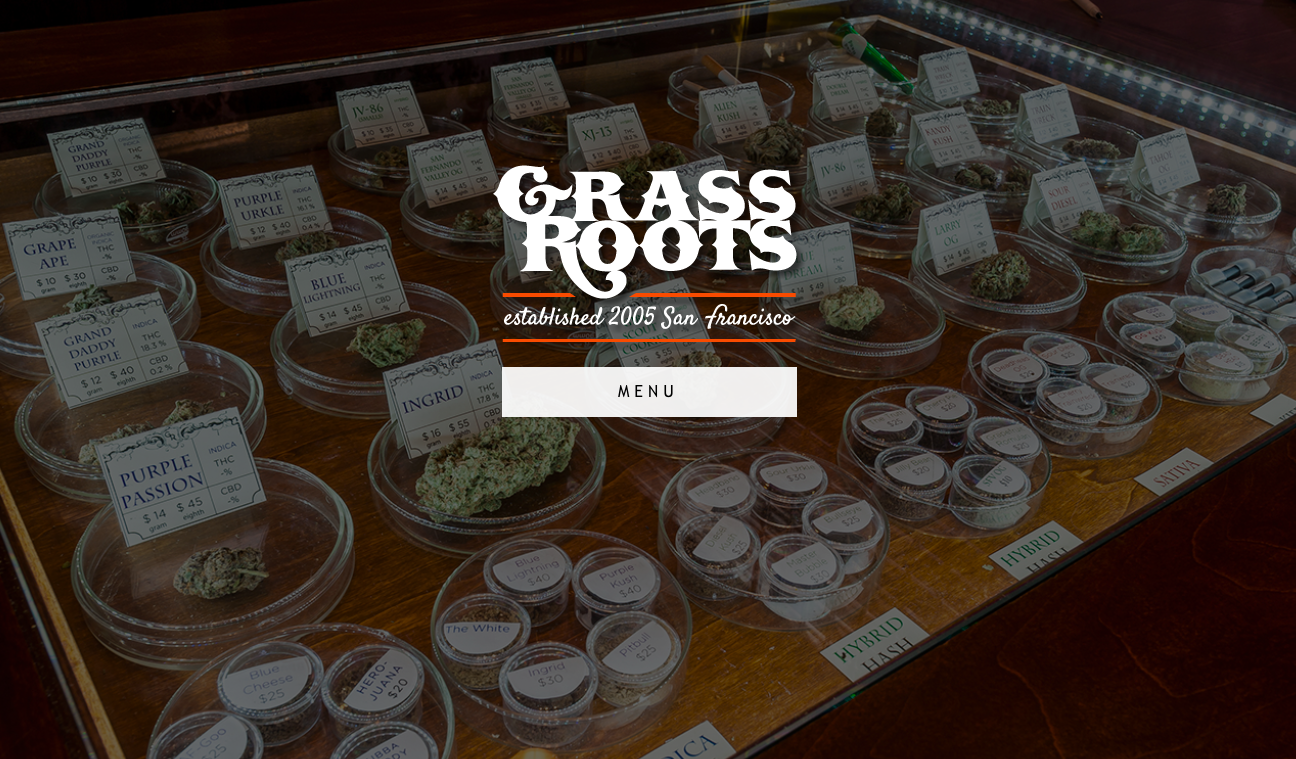
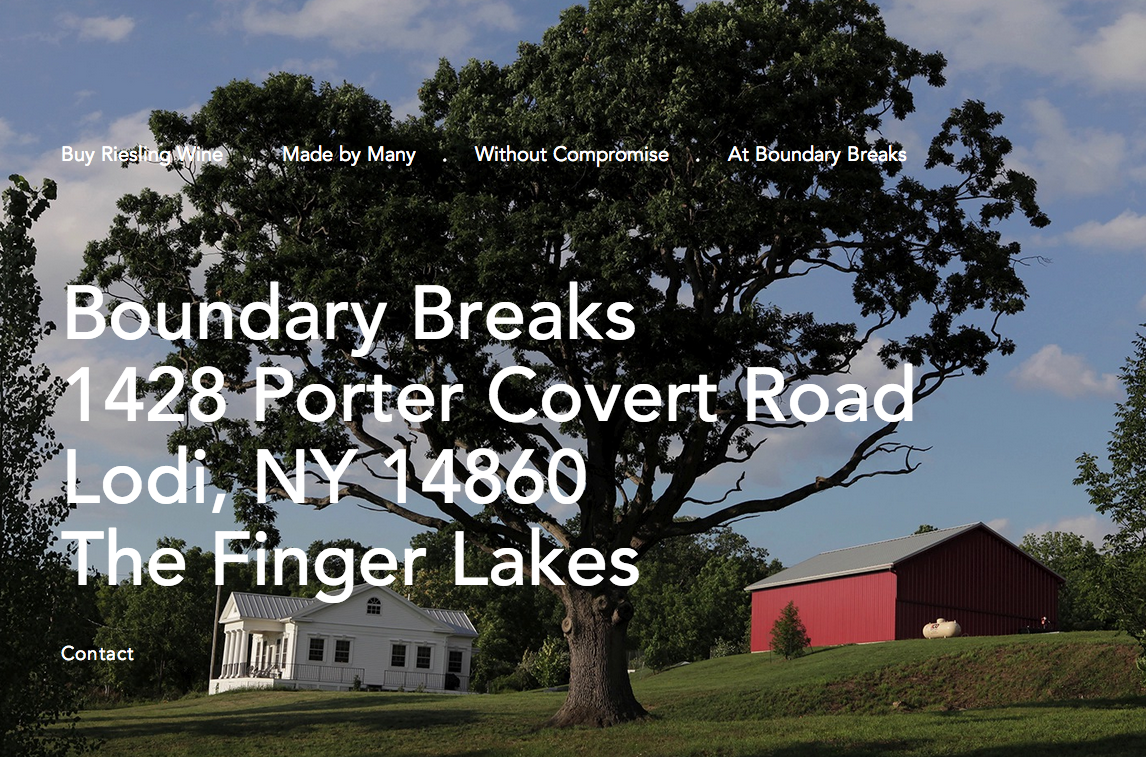
How To Start Testing
Many marketers say they don't have the resources to start testing but tools like Optimizely make testing easier than ever. Here's a few tips on getting started.
- Education is #1: The tools are great, but it doesn't replace a sound education in testing fundamentals. I personally recommend WhichTestWon's Live Events to start. You can also download their report on testing trends.
- Hire a Proper Team: Optimization requires people. If you have no one, push for a part-time resources. If you have part-time resources, push for full-time, and so on.
- Push for an Ideological Shift: If your organization doesn't believe in a data-driven testing, you're going to have to push for that from the top down. That means constantly communicating how your testing, the learnings and your results (good and bad). Showing the improvements you're making constantly will build trust in testing.
- Stay Curious - Question Everything: If there is one thing to look for in your testing culture, it's insane curiosity. Do you question everything? Great! You're doing to go well here.
Stop Sporadic Testing
Many organizations are testing as they like without a methodology.
Why It Doesn't Work
- No Long Term Gains: You may be small lifts but you won't be able to scale that effect.
- No Test Learnings: Just because changing a button color created a conversion lift, doesn't mean you know why. If you can't figure out why, you can't apply that learning going forward.
- Higher % Failure Rate: Your tests are much less likely to be correctly formulated if you don't do this very often.
Why We Don't Test More
The majority of organizations only have one person dedicating half their time to testing. It's your job as an optimizer to build the case for more testing resources with a proven track record of successful lifts. If you're not reporting back on your successes and continually proving your contribution on the bottom line, start now!
Your Company's Facebook Posts Will Soon Be A Waste Of Time
The day when your Facebook organic posts will reach virtually no one is coming fast.
Without boosting your Facebook boosts with advertising spend, you're shouting into the dark. No matter how hard you worked to build your fan base, as many as 98% of your fans never return to your Facebook page after liking it.
Facebook Organic Post Reach Is Diving Off A Cliff
The percentage of your fans that you reach organically (without paying for ads) is rapidly declining: from an average of 12% in October 2013 to 6.2% in February of 2014 (according to social@Ogilvy). The day when your organic posts will reach virtually no one is coming fast.
Shift Strategies or Abandon Facebook Organic Posts in 2014?
Even though Facebook has become an advertising network (with a social media network as a lost leader), you can still target extremely specific audiences. What other medium can you find 15-17 year old girls who live within 50 miles of Cleveland, Ohio, and own an iPhone 4 or iPhone 5? If you have the ability to craft campaigns that speak to your customers in their own homes and phones you can reap enormous rewards. I can't name another newspaper that is sent directly to all of my customers, for as little as $25 a campaign. Can you?
Custom Audiences Are Your New Best Friends
You're going to upload lists of email addresses and lists of phone numbers from your customer contact lists. This will allow you to target your current customers for ads (even if the haven't liked your page) and find more people like your customers on Facebook. Custom Audiences will allow you target people who have shopped with you before.Uploading your customer's email addresses and phone numbers to Facebook puts a lot of trust in their court. Facebook says that they encrypt the data that is uploaded, use it for matching purposes at that time only, and then delete the data. This means you should update the data periodically to add new customers. Privacy is never perfect but this is likely worth the risk for your brand. (Technically, they hash the data, not encrypt it, if you want the full technical explanation.)If uploading your customer lists are too creepy, try tracking everyone who visits your homepage. You'll install a tracking code in your header tags so that you can retarget ads to anyone who visits your company's website. Slightly less creepy and it continues to grow as your website traffic grows.
Lookalike Audiences Are Your New Holy Grail
How often do we sit around as marketers and complain: "I wish I could find more people who are just like my best customers." Facebook is offering to deliver them to you. Once you've uploaded a list of your best customers, you can tell Facebook to match their entire database of people within any single country to your type of people. To get started, see Facebook's "How to Create Lookalike Audiences".
So Now Facebook Is Just Like Any Other Advertising Network? Nope!
It seems clear that Facebook is turning into an Ad network and should be treated like the New York Times or Google Adwords. But one thing still separates Facebook, according to the Ogilvy report. There's one thing that STILL means your social media marketing messages should be fundamental different from other paid ads.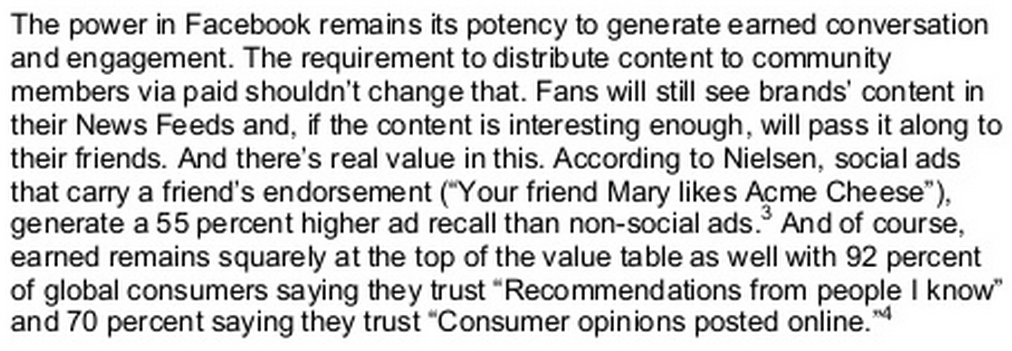
Personalizing B2B Sales Relationships at Scale
Marketers think in terms of campaigns and touch points, whereas traditional sales people think about one-to-one sales calls. Tawheed Kadar has solved for these conflicts by making each sales person a mini marketing organization with his 5x5 Method.
Marketers think in terms of campaigns and touch points, whereas traditional sales people think about one-to-one sales calls. This conflict is being riled up by a few factors:
- Less selling involves in-person contact (more demos are online or remote)
- There's an increased volume of leads coming from marketing
- It's hard to hire more bodies to interact with them with all leads
Tawheed Kadar has solved for these conflicts by making each sales person a mini marketing organization with his 5x5 Method, which he spoke about the Sales Hacker Conference today. Oh and if you haven't guessed yet, his company ToutApp will help you do this.
The 5X5 Method
5 Pre-Planned Templates
These are the five touches a sales person will need to make with an inbound lead. These can be emails, phone calls, tweets, or LinkedIn messages.
5 Days/Weeks/Months Apart
Each touch is going to be 5 days apart. You may elongate the schedule but unless the prospect is super engaged, you don't want to overwhelm them with touches too close together.
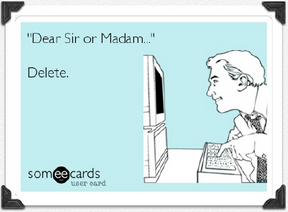 5 Strategic Touches
5 Strategic Touches
You'll give a little bit and take a little bit over five contacts with the prospect.
- Introduce yourself: First touch is simple, don't ask for anything!
- Provide value: Again–don’t ask for anything! Just provide information that the customer will value. Not about your product but about their needs.
- Offer help: Next you offer them help with a need they have.
- Engage for feedback: Build rapport.
- “The Ask”: Only after all these touches, do you actually ask to meet.
Is This Sales Automation?
Yes and no. You’re using your staff to run a drip campaign but with their active involvement so you’re building a better funnel that engages sales people. You don’t want these emails to look like designed marketing emails. The email should look personal.
Best Practices for Touches
- Automate when possible: You may want to automate certain inbound lead collection funnels.
- {{Personalize}} as much as possible: Make sure your email system pulls in multiple data points to personalize the email touch points.
- Use Engagement Data to drive next steps: Front-load leads that visit your blog or pricing page. If your prospect is engaging you online, your rep needs to skip waiting 5 days and call now.
- Constantly iterate and test new messaging: Someone on the team needs to be testing new subject lines and messaging to create the ultimate text.
How You Can Provide Value to the Client in Your Touch
- Use LinkedIn: Research who you’re actually talking to and what the people above your lead are asking them to do.
- Check Glassdoor for Employee Reviews: Are employees leaving? Can you offer help in retention? What do employees complain about? Do you solve for that?
- Check Indeed for Jobs: Hey it looks you’re hiring VP of Sales, do you want my lead list of VPs of Sales that I just interviewed?
- Read their Blog: “Gateway to the soul of the company.” Incorporate what they care about into your touches.
Will This Work In Your Organization?
Check out the ToutApp blog for more sales education materials.
B2B Technology Sales Without a Sales Force
John Marcus runs a software company with a sales force of just himself–but he doesn’t touch 90% of the deals.
 John Marcus runs a software company with a sales force of just himself–but he doesn’t touch 90% of the deals. In his work with Hubspot he studied the science behind sales conversions to build Bedrock Data, and here is how you can sell to businesses without a sales force.
John Marcus runs a software company with a sales force of just himself–but he doesn’t touch 90% of the deals. In his work with Hubspot he studied the science behind sales conversions to build Bedrock Data, and here is how you can sell to businesses without a sales force.
MECHANISM OF ACTION
Starting with your product, look at your product will help sales reps FROM OTHER COMPANIES to:
- Shorten their sales cycle
- Close bigger deals
- Increase their sales close rate
HOST RANGE
Find the other companies that can use your product to overcome objections from their prospects. In Bedrock Data's case, they integrate business databases so they went about finding business data companies.
VECTORING
Next you will infect organizations that can benefit from your product with your DNA. There are two vectors but only one that works:
- Corporate Exposure Vector: Emails about new features and partnerships are typically deleted.
- Direct Exposure: Find inside sales reps of your target companies that are crushing it on LinkedIn. Look for young, smiling, and socially connected sales reps. Send them information about your product and tell them how you can help them shorten their sales cycle, close bigger deals, and increase their close rate. Then you're going to offer to get on sales calls with them to assist. After you do a few calls, they're typically able to sell on your own so you can piggy back on someone else's sales force.
CONTAGIOUS
Start doing co-marketing and joint white papers. If other organizations see deals being closed because you were involved, they will pull you in to intro you. Make your materials easy and natural to share.
FROM THE SALES HACKER CONFERENCE
Notes are from the New York Sales Hacker Conference today in New York City. A few hundred sales managers gathered in a dark basement of a ping pong club with a crackly A/V system to listen to a mix of B2B sales content. Here's hoping they take the ~$300 per person for a better venue next year.
The Rise of the Design Executive Officer
To solve the world's problems: we need to think like designers, feel like designers, and act like designers.
To solve the world's problems: we need to think like designers, feel like designers, and act like designers. Whether you think of yourself as a designer or not, design is what leads change. Maria Giudice, spoke about her book, The Rise of the DEO: Leadership by Design today at Webvisions in NYC.
 Defining the Designer CEO
Defining the Designer CEO
A creative leader that places the importance of design at the center of the company. It's a combination of creative problem solver and strategic business leader.
Why Do We Need a DEO?
The world is moving faster. In 1937 large companies had a life expectancy of 75 years. Today, the expected longevity of those companies is 15 years. Plus only 1 in 4 employees believe in their company's leadership to sustain their organization.
What Makes a DEO Different?
Design executive officers are:
- Change Agents: They lead revolutionary changes.
- Risk Takers: They take smart risks as opposed to avoiding risk.
- Systems Thinkers: They see patterns and can solve problems by connecting unrelated issues.
- Socially Intelligent: They are people focused.
- Intuitive: They make decisions based on more than just numbers.
- GSD: They get shit done.
5 Steps to Improve Your Organization with Design Thinking
- Change Your Mindset about Design and Designers: Design should not be thought of as an expense but as an investment. Design is not a noun, it's an active verb. Design is about radical change.
- Value "We" not "Me": We are no longer in the culture of "me". A lone rock star in the corner being worshipped by interns is outdated. The best solutions will come from multi-disciplinary teams. Once you respect everyone on the team has something to bring to the table, you'll create better work. This also means celebrating diversity, whether job experience, life experience, race, culture, or gender.
- Live in People's Shoes: When you experience and witness the real lives of your customers, you go beyond what you can find out in an interview. Inform your intuition by trying out the lives of your employees and your customers. You will need empathy to figure out how to improve lives in ways that focus groups won't reveal.
- Champion Creative Work Cultures & Make Work Fun: You'll work 90,000 hours in your lifetime so why not create a culture that everyone wants to be a part of. Nailing a creative and fun culture from the top to bottom increases your organization's chance for success. This can also mean getting folks to put away their devices and talk to each other. Try sharing a meal together or meeting during a walk.
- Iterate and Evolve: Be open to constant change. Stay humble by soliciting feedback from your organization continuously. Embrace failure as a way of learning.
*Bonus Tip* Treat People Equally
The success of all businesses lie in people and how we can make powerful connections to each other. When people feel like they're being treated as equal, great things can happen. Instead of treating people based on their status, focus on being present with the people you encounter every day.
How Google Plans to End Repressive Censorship by 2024
The role of the internet in recent revolutions, from Tunisia to Egypt, has put technology at the center of fighting oppression worldwide.
The role of the internet in recent revolutions, from Tunisia to Egypt, has put technology at the center of fighting oppression worldwide. Yasmin Green, Head of Strategy and Operations for Google's Ideas team, spoke at the Women Techmakers summit today about how Google is helping end repressive censorship.
"If you aren't tech savvy, you aren't effective, because you aren't safe." ~Slim Amamou, Tunisian Blogger.
Ending Repressive Censorship by 2024
The Ideas team goal is to end repressive censorship within 10 years. Yasmin spoke about how her birth country of Iran censors information online. The Iranian government blocks sites and slows access to the internet to slow the spread of information. The most terrifying technique Iran is using are man in the middle attacks. For example, the Iranian government created a fake version of the BBC news site with pro-Iranian stories. Anyone within Iran trying to access the BBC were redirect to this site instead of the actual BBC (often without knowing the difference.)
Fighting In-Country Internet Censorship
Proxies allow users to bypass local servers to access the internet outside a repressive country. Yet, finding a reliable and trustworthy proxy can be difficult. The rumor is that the majority of the proxies available in Iran are from the government itself. So how do you find a proxy that you can trust? Google found that many people within a repressed country have contacts in other nations, so they initiated uProxy.
uProxy is a browser extension that lets users share alternative more secure routes to the Internet. It's like a personalized VPN service that you set up for yourself and your friends. uProxy helps users protect each other from third parties who may try to watch, block, or redirect users’ Internet connections.
Stopping DDoS Attacks Silencing Organizations
One of the most common ways to repress access to websites is a DDoS attack (distributed denial of service). Very simply, attackers overwhelm the servers hosting a website so that no one can access the site. DDoS attacks have become a common way to silence others. Google initiated mapping of the attacks on a Digital Attack Map.The Ideas team launched Project Shield, a free service for sites serving news, elections monitoring, and human rights organizations that are being attacked. If their site is attacked they are able to use Google's infrastructure to continue serving content.
Want to Help?
The Google Ideas team is hiring.
3 Development Principles for Web Tools from Google's Crises Response Team
Alice shared three principles that guide the team when creating tools for disaster response: simple, standard, and open.
Alice Bonhomme-Biais, Software Engineer on the Google Crisis Response team, spoke at the Women Techmakers Summit in New York City today. The Google Crises Response team was created to respond to the needs of people after a disaster. They started by studying if people did use the internet for information after a disaster and found that Google was one of the first places people looked for information. Users were looking for primarily three types of information: how the disaster might affect them, if their friends are safe, and what they need to do next. Alice shared three principles that guide the team when creating tools for disaster response.
Simple
People in a disaster don't have time to sign-up for accounts or enter CAPTCHAs. The Google Crises Response team aims to create tools that are as simple and fast to use as possible. "Simple interfaces are the most difficult to build," reminds Alice. For example, Google developed Person Finder with only the two buttons below This tool was developed during a 72-hour hackathon after the Haiti earthquake. It was deployed within one hour of the Japanese earthquake in 2011. Immediately after the earthquake many victims went to tsunami shelters. To help families find each other people in the shelters hand wrote their names and posted them on the walls near the shelter entrance. Then some people took pictures of the postings on the walls and uploaded them to Picasa. Volunteers around the world, who spoke Japanese, translated the postings from the pictures and entered them into Google's Person Finder.
This tool was developed during a 72-hour hackathon after the Haiti earthquake. It was deployed within one hour of the Japanese earthquake in 2011. Immediately after the earthquake many victims went to tsunami shelters. To help families find each other people in the shelters hand wrote their names and posted them on the walls near the shelter entrance. Then some people took pictures of the postings on the walls and uploaded them to Picasa. Volunteers around the world, who spoke Japanese, translated the postings from the pictures and entered them into Google's Person Finder.
Standard
Collecting information from multiple sources is the core of Google's crises response tools. Using standard languages and APIs allows Google to include information from many sources and share that information.One example of the benefits of "standards" was after Hurricane Sandy. There were gas shortages and multiple organizations were working to get information to the public. The state had published a list of open businesses by longitude/latitude in a PDF (not useful to the average person). Google published that data onto their maps to be human readable. Of course, the information was quickly outdated, so the team added a feature to allow visitors to comment on the status of different businesses. Finally, they found a team of students who had been calling gas stations and posting their status. Google was able to quickly add their data to maps because the students had used a standard language.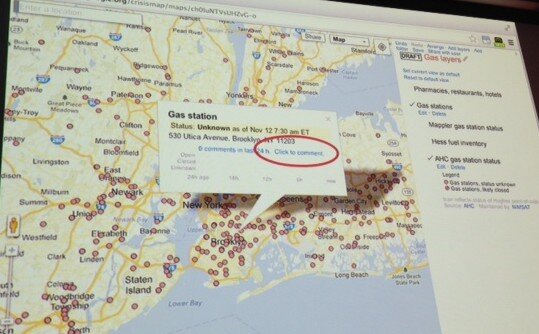
Open
Google's team tries to open-source their tools whenever possible. It allows other developers to contribute and the tools to spread. They also open up about their best practices to other organizations creating technology solutions for crises.
Your Turn
If you're interested in contributing to technology solutions for emergencies, Alice shared a few organizations you can join.
My Inc. Interview: 7 Networking Tips for Women
 Geri Stengel interviewed me about networking tips for women entrepreneurs in conjunction with my monthly Founder Friday events in New York City. I start many meetings reminding the 200 attendees to approach networking events in a thoughtful way designed to make the most of your time. Read the complete article about Networking Tips for Women on Inc.
Geri Stengel interviewed me about networking tips for women entrepreneurs in conjunction with my monthly Founder Friday events in New York City. I start many meetings reminding the 200 attendees to approach networking events in a thoughtful way designed to make the most of your time. Read the complete article about Networking Tips for Women on Inc.
...Connections open doors, doors to money, markets and qualified managers and employees.
- Pick your venue. There are plenty to choose from. If you don’t like the vibe of one organization’s events, try another. You can choose gender-specific hosted events such as Women 2.0 Founder Friday or the National Association of Women Business Owners, industry specific organizations, such as Institute of Electrical and Electronics Engineers or general business groups such as Chambers of Commerce.
- Know your elevator pitch. You are not here to make a sale, so you don’t need to close the deal. You do need to let people know who you are and what you do in a way that makes them want to hear more.
- Ask questions. Women are great at building closeness and connections through conversation. By asking questions you’ll engage the person and really get to know what they do. Still not comfortable? Pretend you are interviewing people for an article about the event; get the who, what, and why. Make the task less personal.
Read the complete article about Networking Tips for Women on Inc. [author] Geri Stengel is the founder of Ventureneer.com, which connects socially responsible businesses, social enterprises, and nonprofits with the knowledge needed to make the world a better place while thriving as businesses. As a woman business owner herself and past board member of the New York City Chapter of the National Association of Women Business Owners, she understands the unique challenges women entrepreneurs face when growing their businesses beyond $1 million.[/author]
Geri Stengel is the founder of Ventureneer.com, which connects socially responsible businesses, social enterprises, and nonprofits with the knowledge needed to make the world a better place while thriving as businesses. As a woman business owner herself and past board member of the New York City Chapter of the National Association of Women Business Owners, she understands the unique challenges women entrepreneurs face when growing their businesses beyond $1 million.[/author]
12 Things You Haven't Tried To Improve Your Website's SEO
 "Best practices are things you should have done if you had thought of them first." If all your competitors are doing it already, you won't get the returns you're looking for by jumping in late. Try taking best practices from other industries and reusing them. This quote is from Byrne Hobart, who taught the Advanced SEO course at General Assembly that I attended last week.How to Advance Your Way Up the Blog HierarchyHere's how to work your way from nothing to a top-level blog or news source.
"Best practices are things you should have done if you had thought of them first." If all your competitors are doing it already, you won't get the returns you're looking for by jumping in late. Try taking best practices from other industries and reusing them. This quote is from Byrne Hobart, who taught the Advanced SEO course at General Assembly that I attended last week.How to Advance Your Way Up the Blog HierarchyHere's how to work your way from nothing to a top-level blog or news source.
- Do a Google search for "your industry blog" and you'll find the most popular ones. Pick a highly-ranked blog that speaks to your prospects. Then use Google to show sites related to the highly-ranked blog by searching for "related:rankedblog.com." Less popular related blogs will be returned. Continue to do this until you find the least popular blogs with readership communities. Collect these into a list.
- Stalk your new blogger friends. Comment on every post they write on your industry and re-tweet their stuff. After a few weeks they'll start to recognize you as a loyal reader.
- Write a post they'll like on your blog and send it to them. For example, write a deeper-dive into a topic they cover or a clarification of something they wrote. If they repost your piece you're in! Plus you'll be the girl they turn to when they need a quote or clarification on your industry.
- Now use their repost of your content to trade up to more popular blogs. Most bloggers read all the blogs larger than theirs and a few sites less popular than theirs. Write an email to a more popular blog, "You may have seen my post on LesserBlog.com, I liked your related post, and so I write this post."
- Continue trading up until you reach the top blog in your industry.
Get More Shares By Giving Up CommentsYou can get more shares if you make sharing the only action available at the end of your post. When someone gets to the bottom of your post, they typically have a couple of choices: commenting, reading a related article, etc. If you make the only option sharing the article with their network, you'll get more shares. This works especially well with controversial content where your audience wants to add their input but can't because you've removed commenting. Google doesn't discern between people linking to your page because they disagree or agree with you.Fast Content Gets Shared FasterContent that is fast to read will get shared more often and more quickly. Shorter posts rise to the top of Reddit because Reddit takes the velocity of votes into account. So a photo that takes five seconds to read and react to will rise further than a well thought-out post that takes ten minutes to read. So if you have a long article, create an infographic of your top data from the post that you can share everywhere and then link back to your longer article.Get More Shares By Figuring Out Why Your Audience Really ReTweetsWhy do most people actually share your posts? They want to show off that they read your type of content (regardless of whether or not they do). This is why posts by Malcolm Gladwell are tweeted seconds after they're posted. Your audience wants to show off how smart they are for finding your content and sharing it with their friends (Facebook) or potential bosses (LinkedIn).Test Keywords Using AdWords Instead of SEO Because It's Cheaper (Really)Ranking on your keywords through organic search can take weeks and even months to climb to the top. You can buy the top slot through AdWords and check if the keywords you've chosen really convert before investing in a longer-term SEO strategy. Once your keyword terms move into organic search the conversion rate won't necessarily be the same but this is a great tactic to compare potential keywords against each other.Swap SEO Friendly Headlines In After Everything-Else Friendly HeadlinesSEO friendly headlines are stuffed with keywords that target searchers. Everything-else friendly headlines use a teaser proposition, controversial view point, or question to encourage click-throughs and shares. You can post the article with your teaser headline, get a lot of shares, and then switch it to your keyword stuffed headline later. Your article will retain it's popularity for being shared even after you change the headline.How A Print Ad Can Increase Your Search RankRun an ad campaign that tells your audience to search for "your company + what you do" on Google. If you get enough people searching for your brand name in conjunction with high-priority keywords, it will rise your search rankings. You'll be more likely to appear in the search suggestions for what you do. Coupon Cabin ran subway ads asking people to Google their name for coupons instead of listing their URL.Optimize Your Guest Blog BioWe all know that guest blogging (in both directions) will help bring credibility to your site. What you may not have thought of is optimizing the keywords used in your guest blog bio. Try to keyword stuff the link back to your company's site. So instead of "Jane Smith is Founder of Company.com" try "Jane Smith is Founder of the most popular widget company in New Jersey."Links Are ForeverWhen someone posts about your business but doesn't link to you, simply contact them and ask. Articles last just as long as the news cycle but links are forever.Use WordPress if You CanSimply put, search engines love WordPress. To solve the SEO drawbacks of WordPress, download the All in One SEO Pack.Use The Most SEO-Friendly URL For Your BlogYour blog's URL should be YourSite.com/Blog for maximum SEO benefit to your site. If you're in a "serious" business and the term "blog" isn't appropriate for your target audience, use YouSite.com/Articles or YouSite.com/Research.This post also appeared on Women 2.0's Blog For Female Entrepreneurs.











